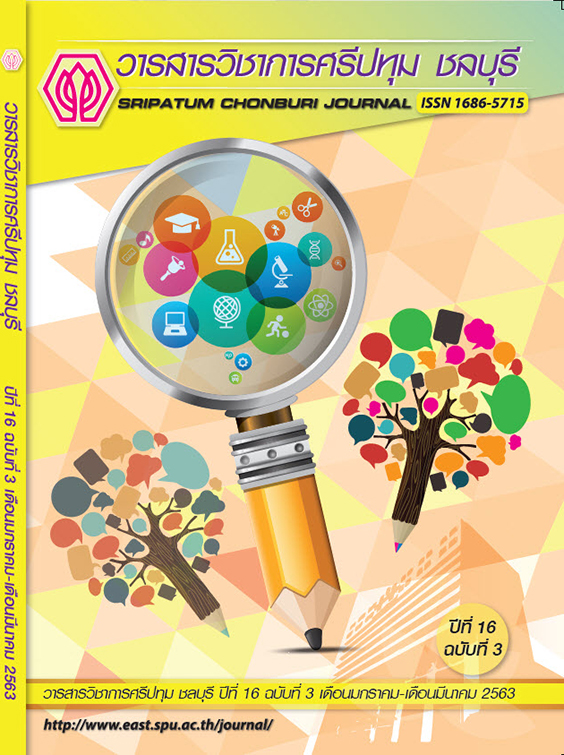8 KEY FACTORS DEVELOPMENT IN CONCRETE FOR EEC's SUSTAINABLE SUCCESS
Keywords:
Eastern Economic Corridor (EEC), development, communication, sustainable successAbstract
The Eastern Economic Corridor (EEC) Project is a strategic plan under the Thailand 4.0 policy, which was created to promote the nation's economic development. The goal is to attract both foreign and Thai investors to conduct more economic activities in the eastern region of Thailand viz; Chachoengsao, Chon Buri, and Rayong. Together with expanding economic growth to lead Thailand to a high-income country and avoid the middle-income trap. This article aims to analyze EEC's important factors and areas that need to be developed to contribute to the sustainable success of the project. There are eight factors; development of innovation, human resource, regulation, area, investment, infrastructure, industrial, and especially communication to create an accurate and precise awareness about the EEC. The said factor is essential for building participation and acceptance of the project. Those involved with the EEC, including government, private, and public sectors, should continue to develop those eight important factors clearly and thoughtfully to contribute steadily and sustainably to the success of the EEC.
References
สัมมนาและประชุมกลุ่มย่อย เพื่อรับฟังความคิดเห็น ต่อร่างแผนการพัฒนาบุคลากร การศึกษา
การวิจัย และเทคโนโลยี (ออนไลน์). เข้าถึงได้จาก: https://www.eeco.or.th [2563, 9 มกราคม].
สำนักงานคณะกรรมการเศรษฐกิจและสังคมแห่งชาติ. (2560). โครงการระเบียงเศรษฐกิจภาคตะวันออก
(Eastern Economic Corridor: EEC). กรุงเทพฯ: สำนักงานคณะกรรมการเศรษฐกิจและสังคม
แห่งชาติ.
สำนักงานคณะกรรมการส่งเสริมการลงทุน. (2560). EEC ระเบียงเศรษฐกิจพิเศษภาคตะวันออก. วารสาร
ส่งเสริมการลงทุน, 28(7), หน้า 8-10.
_______. (2561). เขตพื้นที่เศรษฐกิจพิเศษภาคตะวันออกเพื่ออนาคตของ ASEAN (ออนไลน์). เข้าถึงได้
จาก: https://www.boi.go.th/upload/content/BOI-book%202016-EEC-EN-TH20161129_
88126.pdf [2562, 18 ธันวาคม].
สำนักงานเพื่อการพัฒนาระเบียงเศรษฐกิจพิเศษภาคตะวันออก (สกรศ.). (2561). ทิศทางและการส่งเสริม
การท่องเที่ยวเพื่อพัฒนาเศรษฐกิจและสังคมในพื้นที่ EEC (ออนไลน์). เข้าถึงได้จาก:
https://www.eeco.or.th [2563, 1 มกราคม].
โสรญา พิกุลหอม. (2561). ความต้องการแรงงานไทยในเขตพัฒนาพิเศษภาคตะวันออก (พ.ศ. 2561-2570)
(ออนไลน์). เข้าถึงได้จาก: https://library2.parliament.go.th/ejournal/content_af/2561/
aug2561-1.pdf [2562, 8 ธันวาคม].
Garrison, K. C., & Magoon, R. (1972). Educational psychology. Ohio, OH: Charles E. Morrill.
Klapper, Joseph T. (1960). The effect of mass communication. New York, NY: Free.
Downloads
Published
Issue
Section
License
บทความทุกบทความเป็นลิขสิทธิ์ของวารสารวิชาการศรีปทุม ชลบุรี



